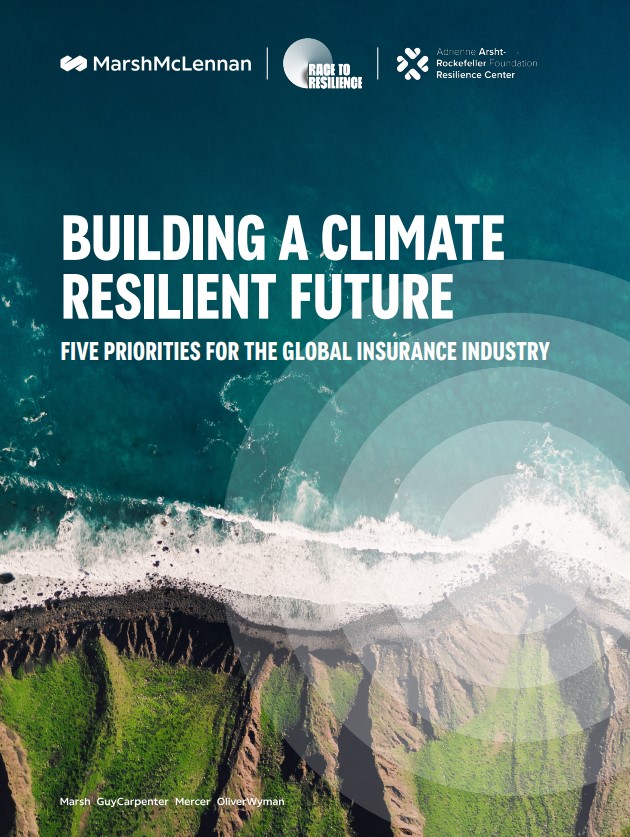Building a Climate Resilient Future
The report features 5 top priorities for the global (re)insurance industry to better adapt to climate change, address barriers, scale impact, develop commercial opportunities and build climate resilience.

Over the past 50 years, the number of weather-related disasters has risen five-fold, with climate change generally accepted to be a primary driver. This increase—coupled with an upsurge in the value of assets and population movement to high-risk areas—has resulted in a significant increase in losses. Investing in adaptation and resilience is critical to combat these burgeoning costs and ensure that communities around the world can better withstand and recover from natural disasters.
Building a Climate-Resilient Future, a report from Marsh McLennan, in collaboration with the United Nations Race to Resilience Initiative and the Adrienne Arsht–Rockefeller Foundation, provides 5 recommendations on how the insurance industry can better adapt to climate change, address barriers, scale impact, develop commercial opportunities and build climate resilience.
The report launched at the 2023 United Nations Climate Change Conference, more commonly referred to as COP28. Guy Carpenter is a business of Marsh McLennan.
Supporting adaptation and resilience has clear commercial value for the (re)insurance industry while fulfilling an important social good. Insurers already have many of the tools at hand to expand their role beyond traditional risk transfer, but many have not undertaken the mindset shift that allows this potential to be realized. Successfully fulfilling this agenda will improve societal resilience and drive long-term success for insurers in the face of climate change.

The report features 5 top priorities for the global (re)insurance industry to better adapt to climate change, address barriers, scale impact, develop commercial opportunities and build climate resilience.